
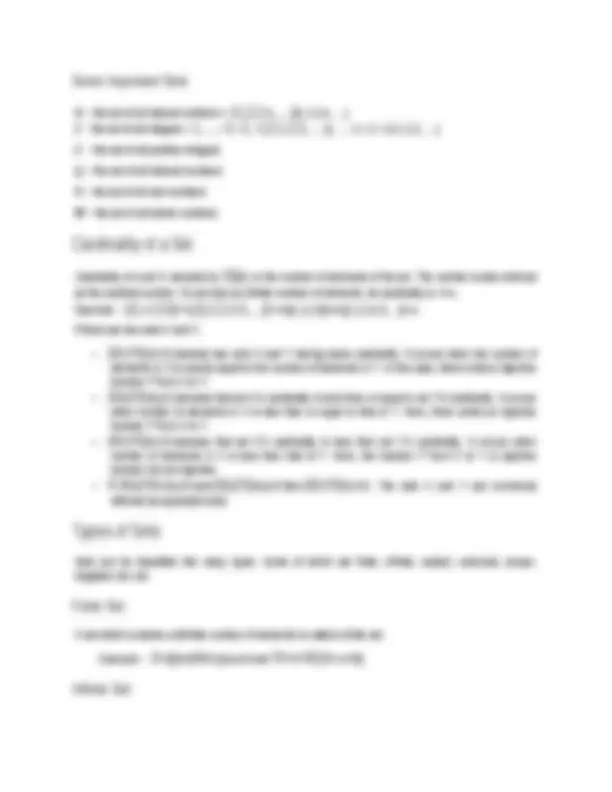
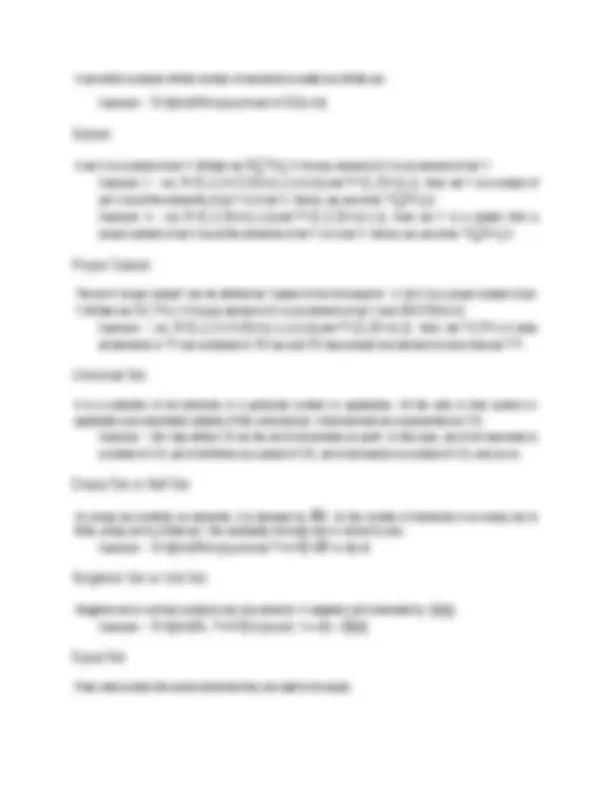
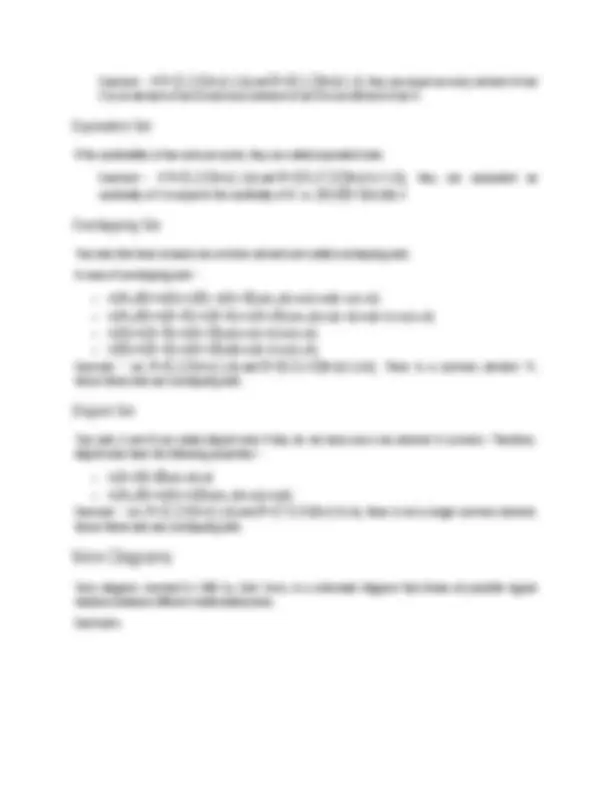
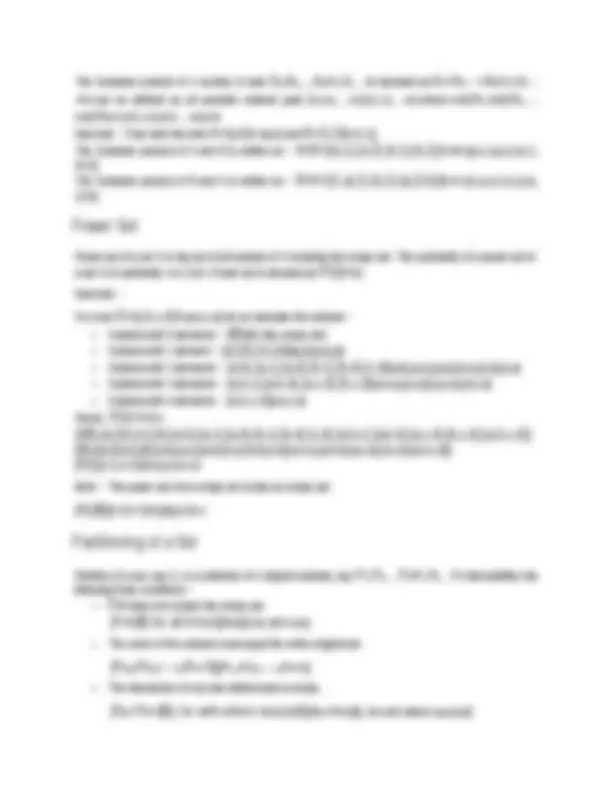
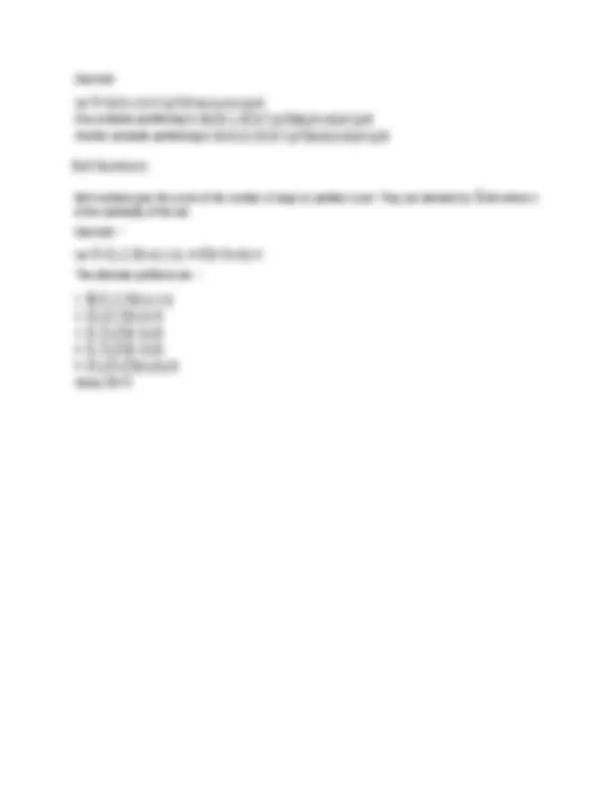


Study with the several resources on Docsity

Earn points by helping other students or get them with a premium plan


Prepare for your exams
Study with the several resources on Docsity

Earn points to download
Earn points by helping other students or get them with a premium plan
Community
Ask the community for help and clear up your study doubts
Discover the best universities in your country according to Docsity users
Free resources
Download our free guides on studying techniques, anxiety management strategies, and thesis advice from Docsity tutors
An introduction to Discrete Mathematics, focusing on the fundamental concepts of sets, relations, and functions. It covers the definition of sets, their representation in roster and set builder notation, and the cardinality of sets. The document also introduces the concept of finite and infinite sets, as well as set operations such as union, intersection, difference, and complement.
Typology: Lecture notes
1 / 9

This page cannot be seen from the preview
Don't miss anything!






Discrete Mathematics is a branch of mathematics involving discrete elements that uses algebra and arithmetic. It is increasingly being applied in the practical fields of mathematics and computer science. It is a very good tool for improving reasoning and problem-solving capabilities. This tutorial explains the fundamental concepts of Sets, Relations and Functions, Mathematical Logic, Group theory, Counting Theory, Probability, Mathematical Induction and Recurrence Relations, Graph Theory, Trees and Boolean Algebra. Mathematics can be broadly classified into two categories − Continuous Mathematics − It is based upon continuous number line or the real numbers. It is characterized by the fact that between any two numbers, there are almost always an infinite set of numbers. For example, a function in continuous mathematics can be plotted in a smooth curve without breaks. Discrete Mathematics − It involves distinct values; i.e. between any two points, there are a countable number of points. For example, if we have a finite set of objects, the function can be defined as a list of ordered pairs having these objects, and can be presented as a complete list of those pairs.
Though there cannot be a definite number of branches of Discrete Mathematics, the following topics are almost always covered in any study regarding this matter − Sets, Relations and Functions Mathematical Logic Group theory Counting Theory Probability Mathematical Induction and Recurrence Relations Graph Theory Trees Boolean Algebra We will discuss each of these concepts in the subsequent chapters of this tutorial. German mathematician G. Cantor introduced the concept of sets. He had defined a set as a collection of definite and distinguishable objects selected by the means of certain rules or description. Set theory forms the basis of several other fields of study like counting theory, relations, graph theory and finite state machines. In this chapter, we will cover the different aspects of Set Theory.
A set is an unordered collection of different elements. A set can be written explicitly by listing its elements using set bracket. If the order of the elements is changed or any element of a set is repeated, it does not make any changes in the set.
A set of all positive integers A set of all the planets in the solar system A set of all the states in India A set of all the lowercase letters of the alphabet
Sets can be represented in two ways − Roster or Tabular Form Set Builder Notation
The set is represented by listing all the elements comprising it. The elements are enclosed within braces and separated by commas.
The set is defined by specifying a property that elements of the set have in common. The set is described
Assignment: Specify the property base on the last example in Set builder notation
A set which contains infinite number of elements is called an infinite set.
The term “proper subset” can be defined as “subset of but not equal to”. A Set X is a proper subset of set
It is a collection of all elements in a particular context or application. All the sets in that context or
finite, empty set is a finite set. The cardinality of empty set or null set is zero.
If two sets contain the same elements they are said to be equal.
A is an element of set B and every element of set B is an element of set A.
If the cardinalities of two sets are same, they are called equivalent sets.
Two sets that have at least one common element are called overlapping sets. In case of overlapping sets −
hence these sets are overlapping sets.
Two sets A and B are called disjoint sets if they do not have even one element in common. Therefore, disjoint sets have the following properties −
hence these sets are overlapping sets.
Venn diagram, invented in 1880 by John Venn, is a schematic diagram that shows all possible logical relations between different mathematical sets. Examples
(b,2)}
(2,b)}
Power set of a set S is the set of all subsets of S including the empty set. The cardinality of a power set of
Example −
{{∅},{a},{b},{c},{d},{a,b},{a,c},{a,d},{b,c},{b,d},{c,d},{a,b,c},{a,b,d},{a,c,d},{b,c,d},{a,b,c,d}}
Note − The power set of an empty set is also an empty set.
following three conditions −
The union of the subsets must equal the entire original set.
The intersection of any two distinct sets is empty.